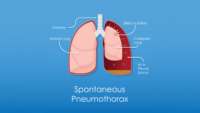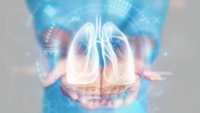Nurses can serve as leaders as they help patients and families through a difficult time.
Takeaways:
- All nurses must be competent in providing palliative and end-of-life care.
- Nursing advocacy includes being able to recognize symptoms that cause patient distress, making recommendations to palliate patient distress, and supporting and educating the patient’s family.
- The interdisciplinary team supports the patient and family in palliative care and covers the medical, nursing, psychosocial, and spiritual needs of the patient and family.
- Nurses should be able to identify the signs of imminent death so that they can prepare and support the patient and family.
- Good palliative nursing care can make the dying process more comfortable for the patient and family.
CNE 1.5 contact Hours
Learning Objectives
- Discuss pharmacologic strategies for relieving distress in patients with serious to end-stage illness.
- Discuss nonpharmacologic strategies for relieving distress in patients with serious to end-stage illness.
- Identify the stages of death.
The author and planners of this CNE activity have disclosed no relevant financial relationships with any commercial companies pertaining to this activity. See the last page of the article to learn how to earn CNE credit.
Expiration: 7/1/23
Palliative care measures for patients with serious or end-stage illnesses can be confusing and lack clarity. Typically, patient care goals focus on curative measures, and patients and families may not be familiar with palliative care. To complicate matters, patients, families, and even providers frequently associate palliative care with imminent death and “giving up.” However, when we understand the effects of a disease, its interventions, and know patients’ care goals, we can be better patient advocates across the spectrum of care. We can serve as nurse leaders on an interprofessional team to manage patient and family care and help patients and their loved ones cope with the disease process. Here we address some commonly asked palliative care questions.
What is the biggest issue for patients with serious or end-stage illness?
Managing symptoms and side effects of the disease process and its treatment typically is the primary goal of patients who are seriously ill or dying. Palliative care focuses on improving patient quality of life and is available to all patients with a serious or end-stage illness, whether or not they’re receiving curative treatment.
According to the American Nurses Association’s Call for Action: Nurses Lead and Transform Palliative Care, all nurses should be prepared to provide primary palliative care according to the eight domains outlined by the National Consensus Project for Quality Palliative Care. (See 8 domains of palliative care.)
The National Consensus Project for Quality Palliative Care outlines eight domains of care, which are supported by the American Nurses Association.
1. Structure and processes of care. Providing care via an interprofessional team based on the patient’s and family’s care goals
2. Physical aspects of care. Treating physical symptoms, such as pain and nausea
3. Psychological aspects of care. Treating psychological symptoms, such as anxiety and depression
4. Social aspects of care. Assessing caregivers, family, friends, social network; communicating prognosis
5. Spiritual aspects of care. Assessing spiritual or religious beliefs, hopes, and fears
6. Cultural aspects of care. Assessing customs, language, and belief systems
7. Care of patients at the end of life. Recognizing imminent death, being present, and educating patient and family about what to expect
8. Ethical and legal aspects of care. Identifying healthcare proxies and using advance directives
What are the most common signs and symptoms, and how are they treated pharmacologically?
Patients may experience signs and symptoms related to disease progression, treatment, or both. Common physical symptoms are pain, dyspnea, nausea, anorexia/cachexia, and constipation. Nurses also should assess patients for psychological and spiritual symptoms, such as delirium, anxiety, and spiritual unrest.
Even if patients are unconscious or sleeping, symptoms such as pain, anxiety, and dyspnea don’t abate. In unconscious patients, signs and symptoms may manifest as brow furrowing, clenched teeth, vocalizations, and tachycardia. Medications must be continued for patient comfort.
Pain
Patients can have somatic, visceral, and neurologic pain, or a combination. Mild pain can be treated with acetaminophen or nonsteroidal anti-inflammatory drugs (NSAIDs), and moderate pain with hydrocodone, oxycodone, acetaminophen, and NSAIDs. Severe somatic or visceral pain typically is treated with opioids, starting with an oral low-dose medication, such as morphine (2.5 to 5 mg every 6 hours), and slowly titrating based on the patient’s pain level. With severe or end-stage illness, pain likely will progress. Reassess the patient’s pain level frequently. If the patient is using p.r.n. pain medication frequently, a long-acting medication (such as MS Contin) may be ordered. Continuous I.V. or subcutaneous opioid infusions may be ordered for severe pain.
Hydromorphone and hydrocodone can be used p.r.n. for breakthrough pain, but multiple types of opioids should not be used concurrently. Using a consistent p.r.n. or breakthrough medication is important when titrating long-acting medication because the amount of p.r.n. medication taken within 24 hours can be used to start or adjust long-acting medications. Using a consistent p.r.n. medication also can prevent adverse effects. Fentanyl patches can be used for long-acting pain management, but be cautious; patches can’t easily be titrated, and the patient must have a sufficient amount of subcutaneous fat for the medication to be effective. Patients who are thin or emaciated run the risk of absorbing the medication too quickly.
For patients with neurologic pain, adjuvants such as gabapentin, tricyclic antidepressants, or low-dose methadone may be ordered. Methadone is considered effective for neurologic pain and builds up to a stable concentration in the blood, functioning as a long-acting medication. Note that as methadone builds to a therapeutic concentration, faster-acting medications for pain control must be used and titrated down as the methadone takes effect.
Dyspnea
Dyspnea is a common end-of-life symptom. Typically, it’s associated with lung and heart diseases, such as chronic obstructive pulmonary disease (COPD), lung cancer, and chronic heart failure (CHF). Patients with end-stage lung disease will require oxygen. Adding bronchodilators and steroids can help relieve chest constriction and lessen dyspnea. Low-dose opioids (such as morphine) also relieve dyspnea, but the exact mechanism of action is unknown. Continuous opioid infusions also can be given for severe dyspnea.
To address the anxiety that may accompany dyspnea, the provider may order an anxiolytic such as a short-acting benzodiazepine (for example, lorazepam and alprazolam) to control dyspnea or prevent it from worsening. If a patient is dyspneic but not hypoxic, which occurs with cancer and some other disease processes, oxygen may not help manage symptoms.
For CHF exacerbation, the provider may order oral, subcutaneous, or I.V. diuretics (for example, furosemide) to drain excess fluid and help ease breathing. Oxygen and opioids also may help reduce dyspnea for patients with CHF, and nitroglycerin will decrease cardiac preload and afterload.
Many patients have both CHF and COPD. A complete assessment will help determine which condition is exacerbated and which symptoms to treat.
Nausea
Different disease processes (such as a bowel obstruction) and treatments (such as chemotherapy) can cause nausea and vomiting. Assessing the cause of the nausea will determine the best antiemetic treatment.
If the nausea is chemotherapy-related, serotonin 5HT3 antagonists, such as ondansetron, work well. However, after treatment ends, ondansetron won’t work as well. The best antiemetic agent for patients with end-stage disease is haloperidol, which blocks the dopamine receptors and decreases nausea.
If nausea and vomiting are related to constipation or a partial bowel obstruction, a prokinetic agent (such as metoclopramide) may be ordered. Metoclopramide will cause GI muscle contraction and decrease gastric emptying time, propelling gastric contents forward and relieving a partial obstruction. However, it shouldn’t be used if the patient has a complete bowel obstruction; the obstruction must be removed. If that isn’t possible, I.V. octreotide, which increases gastric emptying time and inhibits gastric hormones, may be used to relieve intractable vomiting.
Anorexia/cachexia
Loss of appetite and weight loss are distressing symptoms for patients and their families. Patients may not feel like eating because of nausea, medications, or disease complications, and it can be hard for both patients and families to let go of mealtime traditions.
Interventions are based on the patient’s illness stage and care goals. If the patient has a serious illness and is continuing to receive curative treatment, gastrostomy-tube feeding or total parenteral nutrition may be ordered until the patient can eat on their own.
Families of patients with an end-stage disease may worry about “starving the patient” and encourage them to eat, causing distress for everyone. Nurses can help by explaining that the body is beginning to “shut down” and can’t process the same amounts of food and fluid as before. Artificial hydration and nutrition aren’t recommended at end of life because the body can’t absorb the fluid or nutrients, resulting in pulmonary edema, aspiration pneumonia, or diarrhea.
Some medications can improve appetite, but their effects vary and are short acting. Before these medications are prescribed, a thorough assessment should be performed to ensure the loss of appetite isn’t caused by delayed gastric emptying or constipation. Steroids, such as dexamethasone, frequently are ordered because they increase appetite. Tricyclic antidepressants (such as mirtazapine) also may be prescribed as appetite enhancers. Many patients use cannabinoids, such as dronabinol and medical marijuana, for nausea and appetite enhancement.
Constipation
Many patients with serious and end-stage illnesses experience constipation caused by a bowel abnormality or obstruction, fecal impaction, dehydration, limited mobility, or opioids prescribed for pain management. Best practices in hospice and palliative care recommend that patients taking opioids must have a prophylactic bowel regimen. If constipation isn’t treated, it can lead to obstipation and increase the risk for peritonitis.
Bulk-forming agents, such as psyllium, should not be used to treat constipation in patients who are seriously ill or dying; these agents absorb water and can cause dehydration, exacerbating constipation. Oral laxatives and stool softeners, such as docusate sodium, magnesium citrate, and polyethylene glycol are recommended instead. If a patient hasn’t had a bowel movement after 3 days of oral laxatives, a rectal suppository may be ordered. If the patient still doesn’t have a bowel movement, perform a digital rectal exam to check for fecal impaction. Impactions should be removed; if no impaction is found, an enema may be given.
Delirium
Delirium can be hyperactive, hypoactive, or a combination. It can manifest as hallucinations, delusions, paranoia, agitation, lethargy, apathy, and slowed speech and thought.
First assess the patient to rule out reversible causes, such as drugs and uncontrolled pain. If the patient is at end of life and all reversible causes have been ruled out, they likely have terminal delirium.
Terminal delirium is part of the dying process and manifests as emotional and physical restlessness. It can’t be reversed, but it may come and go. Sometimes, the patient may calmly talk to people who died long ago, and no intervention is necessary. At other times, the patient may be agitated and unsafe. Agitation treatment includes medications such as haloperidol and quetiapine. Haloperidol is the most effective treatment, but it can’t be given to patients with Parkinson’s disease because it lowers the seizure threshold. In these patients, quetiapine is recommended.
Anxiety
All patients with serious or end-stage illnesses should be assessed for anxiety. Pharmacologic treatment typically includes a short-acting benzodiazepine.
Do opioids hasten the dying process or cause addiction?
No evidence exists that opioids, when used according to established dosing guidelines, hasten the dying process. In fact, treating pain effectively has been shown to increase lifespan and quality of life. Legally and ethically, providers have a duty to provide opioids for symptom relief at the end of life, and a provider’s fear of death as a consequence doesn’t justify withholding these medications.
Patients and their families may fear opioid addiction. However, the rate of addiction is extremely low in patients who are seriously ill or dying. The more common issue is pseudoaddiction, which refers to drug-seeking behavior caused by inadequate pain management. As patients becomes tolerant to a certain dose, or the pain worsens, reassess their pain regimen and advocate for dosing that manages pain adequately.
What nonpharmacologic measures can be used for symptom relief?
As nurses, our scope of practice includes facilitating a healing environment for patients and families. In addition to administering medication, we should consider nonpharmacologic comfort measures, including creating a calming environment, positioning patients comfortably, and facilitating frequent oral hygiene. (See Comfort measures.)
Keeping patients and their families comfortable during a serious or end-stage illness is a primary nursing goal. Consider these suggestions for achieving that goal.
- Keep the patient’s environment calm, cool, and quiet with low lighting.
- Apply heat, ice, compression, and/or elevation to help alleviate pain.
- Place the patient in a comfortable position (for example, tripod, Fowler, semi-Fowler).
- Play soothing music or the patient’s favorite music.
- Use guided imagery, reiki, or massage to reduce pain or dyspnea.
- Speak to the patient in a calm and reassuring manner.
- Listen to patients and family members.
- Provide culturally sensitive care.
- Facilitate frequent oral hygiene and keep fluids fresh.
- Determine the patient’s food and beverage preferences.
- Advise smaller, more frequent meals to help reduce gastric distress.
- Reorient patients having delusions if possible, but don’t argue with them.
- Include the family in the patient’s care plan.
- Encourage family members to talk to the patient, even if he or she is unconscious.
- Provide adequate education and frequent check-ins with patients and families about treatments, prognosis, symptom management, and medication regimens.
What is the role of the interprofessional team?
An interprofessional care team for patients with serious and end-stage illnesses typically includes physicians, physician assistants, nurses, nurse practitioners, social workers, case managers, chaplains, physical therapist, dietitians, and aides. In many cases, nurses serve as case managers or liaisons, coordinating care among the different disciplines.
The team takes a holistic care approach, addressing the patient’s medical, nursing, psychosocial, and spiritual needs. In addition to helping the patient and family, this approach provides support and a range of expertise to ensure the team provides optimal care. Working on a team also helps ensure everyone is on the same page.
What are the stages of death?
Signs and symptoms of dying will vary among individuals; however, with many end-stage illnesses, they typically fall within three stages: declining, transitioning, and actively dying.
Decline doesn’t have a definite time frame but typically starts a few months before death. Patients may be unable to complete activities of daily living, and they frequently feel much more fatigued than at baseline.
Transitioning occurs weeks to a month before death. At this stage, patients’ food and fluid intake decreases (they begin taking only bites of food and sips of fluid), they spend more time sleeping, and they may exhibit signs of delirium (for example, confusion, agitation, and talking to people who have died).
Actively dying starts hours to days before death. Common signs are decreased consciousness, breathing pattern changes, dark urine, and terminal delirium.
How can I tell if someone is dying imminently?
Signs of imminent death vary among patients, but some hallmark signs are common.
Breathing changes
Respiratory changes frequently occur at end of life. Patients may have an irregular breathing pattern (Cheyne-Stokes respirations) in which the respiratory rate becomes progressively faster and deeper, then decreases, ending with a period of apnea. “Guppy breathing,” also seen at end of life, consists of shallow, rapid, agonal breaths. Dyspnea is common, even when patients are unresponsive, and it should be managed with sublingual or injectable morphine.
Audible congestion (“death rattle”)
At end of life, the muscles of the jaw relax, the patient may swallow infrequently, and the mouth may hang open, resulting in oropharyngeal secretions collecting at the back of throat. The fluid vibrates during breathing and “rattles.” This isn’t uncomfortable for the patient, but it may be distressing for the family. Rather than suctioning the patient, which will increase secretions, reposition them and elevate the head of the bed. Medications such as scopolamine, glycopyrrolate, and hyoscyamine (sublingual or injectable) may be ordered to help dry secretions.
Decreased level of consciousness and terminal delirium
As the patient gets closer to death, mental status changes are common. Patients may withdraw socially, sleep most of the day, and become more unresponsive. They may experience terminal delirium, a state where they become more restless, agitated, and/or hallucinate. Terminal delirium can be managed with medication and environmental changes.
Extremity cooling, pallor, and mottling
Closer to death, blood is shunted away from the extremities to core body organs (heart, brain, lungs). When this happens, the extremities will cool, pulses will weaken, and the skin will become pale and mottled. These signs aren’t seen with every patient, but they can indicate that death is imminent.
Decrease in food and fluid intake
As the body starts to shut down, patients decrease food and fluid intake. Family members may think the patient is being starved. Talk to them about the dying process so they understand that this is normal. Offer the patient food and fluids for comfort. Use mouth swabs to moisten the mouth, and provide oral care. Consider dipping swabs into the patient’s favorite foods (in liquid, soup, or puree form), so that they can enjoy the flavor even though unable to eat.
Decreased fluid intake will reduce urine output, which will be dark in color. This natural dehydration may cause a fever. Use cool compresses on the forehead, axilla, and groin to keep the patient comfortable, and administer acetaminophen orally or rectally if tolerated.
Urinary and fecal incontinence
While imminently dying or upon death, urethral and anal sphincter relaxation occurs, which can cause urinary and fecal incontinence.
How can I best support family?
Nurses play a major role in providing support and reassurance to the family and caregivers, both in home and long-term care settings. Family members who want to do more for their loved one may feel helpless and alone. Education is key to helping them feel supported and part of the care plan. Teach family members and caregivers about the disease process, the stages of dying, and what to expect. Provide detailed instructions and reasons for any treatments or medications they need to give. Also, teach them to assess and treat the patient for signs of discomfort.
Death is overwhelming, so provide ongoing family and caregiver education; they may not grasp everything the first, second, or even third time they hear it. Provide reassurance that they’re doing a good job caring for the patient. Friends and family may be afraid to talk to dying patients. Let them know that they can continue to talk with the patient as they normally would, even if they aren’t conscious. Encourage them to be open and honest about how they feel.
Easing distress
Death is a process that’s frequently hidden away in our culture. Watching someone die can be stressful and scary to family and friends. As nurses, we can help patients and families cope with the dying process. We can help them establish a “new normal” and ensure that loved ones understand when the patient is comfortable. This can provide a great source of relief.
Kaveri M. Roy is an assistant professor of nursing at MGH Institute of Health Professions in Boston, Massachusetts, and a hospice nurse educator at Care Dimensions in Danvers, Massachusetts.
References
Aina F, Kelsey B. Demystifying palliative and hospice care. Am Nurse Today. 2017;12(12):16-8.
American Nurses Association. Call for Action: Nurses Lead and Transform Palliative Care. March 13, 2017. nursingworld.org/~497158/globalassets/practiceandpolicy/health-policy/palliativecareprofessionalissuespanelcallforaction.pdf
Drew DJ, Gordon DB, Morgan B, Manworren RCB. “As needed” range orders for opioid analgesics in the management of pain: A consensus statement of the American Society for Pain Management Nursing and the American Pain Society. Pain Manag Nurs. 2018;19(3):207-10.
Flaherty JH, Tumosa N. Saint Louis University Geriatric Evaluation Mnemonics and Screening Tools. aging.slu.edu/uploads/pdf/Saint-Louis-University-Geriatric-Evaluation_2013.pdf
Herr K, Coyne PJ, Ely E, Gélinas C, Manworren RCB. ASPMN 2019 position statement: Pain assessment in the patient unable to self-report. Pain Manag Nurs. 2019;20(5):402-3.
Hospice and Palliative Nurses Association. Core Curriculum for the Generalist Hospice and Palliative Nurse. 4th ed. Dubuque, IA: Kendall Hunt Publishing; 2015.
Hospice and Palliative Nurses Association. Position statement: The ethics of use of opioids in palliative nursing. advancingexpertcare.org/position-statements
Hospice and Palliative Nurses Association. Position statement: Medically administered nutrition and hydration. advancingexpertcare.org/position-statements
National Consensus Project for Quality Palliative Care. Clinical Practice Guidelines for Quality Palliative Care. 4th ed. Richmond, VA: National Coalition for Hospice and Palliative Care; 2018. nationalcoalitionhpc.org/ncp


















5 Comments.
I have read the article and taken the accompanying test and paid for the continuing education. Now I am unable to print the certificate. This site is very difficult to navigate.
Kathy Jorgensen, RN, MA, MSN
Having just recently lost my father in May from End-stage Parkinson’s Disease, I can relate to all aspects in this article. It is so important for the medical team to get informed and stay up to date on palliative care and end-of-life expectations. One thing that really stood out, was not giving Haldol to a patient with Parkinson’s Disease to manage end-stage delirium…he did end up experiencing a seizure. Continuing education give us the opportunity to evaluate our own practices and improve upon our practice. I will be sharing this article for sure. Natalie Alexander MSN, RN
I am a nurse working at a personal care home in Canada. We also take care of palliative residents/patients at our home. This article is very helpful and informative. I will use this article for palliative care planning of our residents/patients. All American Nurse publication articles are very thorough and informative. Thank you for sharing your articles. Jose Solitana, staff nurse
Very informative article. My husband passed away in February 2020 and received palliative care at the VA Hospital in Birmingham, Alabama and Cedar Ridge Veterans Facility and Hospice. Being an RN for 47 years did not fully prepare me for this process. This article confirmed the special care my husband received.
No Comments